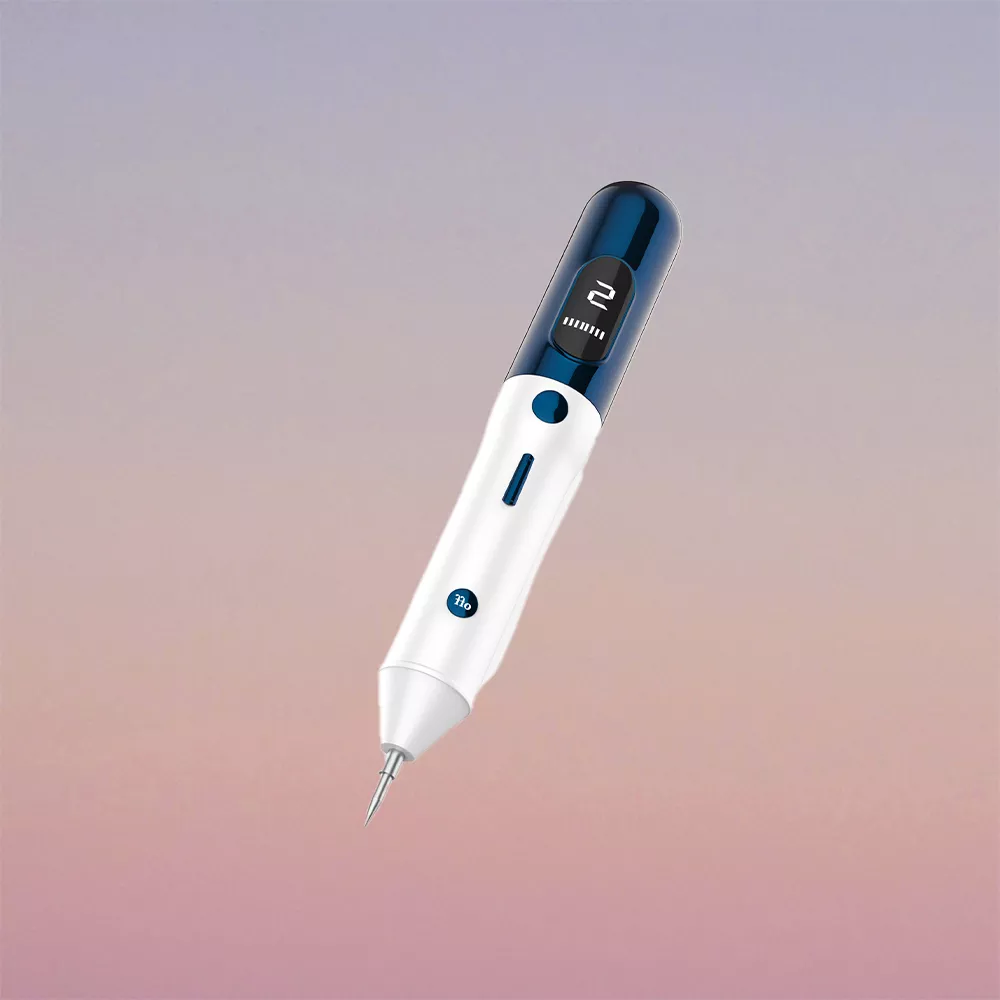
Getty Images
Skincare hacks are everywhere on TikTok, but some are significantly more dangerous than others, and the use of at-home plasma pens definitely falls into that please-dont-try-this-at-home category. If you explore SkinTok, you’ve likely already seen #PlasmaPen videos all over your FYP. But if that hashtag isn’t ringing a bell, maybe this will: Usually, these videos look like a trypophobic’s worst nightmare because of the small dots—or rather burn marks—they leave on the surface of your skin.
“Plasma pens are devices that essentially create tiny burns in the skin,” Dr. Joshua Zeichner, dermatologist and Director of Cosmetic and Clinical Research in Dermatology at the Mount Sinai Hospital, explains. “The idea is that by traumatizing the skin you can take advantage of its ability to heal itself back up, creating tighter, firmer skin.”
The treatment, which is marketed as skin-tightening, may seem harmless. Sure, it’s non-invasive and requires no needles, but that doesn’t mean it’s safe. “There are a number of over-the-counter, non FDA-approved plasma pens available on the market, and there is a growing trend to perform these treatments at home,” board-certified dermatologist Dr. Rina Allawh, explains. Unfortunately, at-home plasma pens—like the kind you see in DIY TikTok videos—can cause permanent damage.
Read on for all the details on at-home plasma pens, and why you should skip this trend.
Meet the Expert
Dr. Rina Allawh is a board-certified dermatologist at Schweiger Dermatology Group in King of Prussia.
Dr. Joshua Zeichner, M.D. is a dermatologist and the Director of Cosmetic and Clinical Research in Dermatology at the Mount Sinai Hospital in New York City.
What Are At-Home Plasma Pens?
Plasma pens work by using “plasma energy to deliver pulses of plasma to specific areas on the face,” Allawh explains. This plasma energy, which is created when a gas is super-heated, "targets fibroblasts in the skin, which are key components of the dermis (the second layer of the skin)," she adds.
The goal? “Plasma pens are designed to minimize skins fine lines and wrinkles, target stubborn areas of skin dyspigmentation, and improve dull complexion,” Allawh says. Unfortunately, at-home plasma pen treatments are not known for their efficacy—or safety.
“I do not recommend using plasma pens at home. Even in the best hands, they can lead to permanent scarring and permanent dark or light spots in the skin," Zeichner says.
Why Are At-Home Plasma Pens Harmful?
“Plasma energy is very strong,” Allawh says, adding that “you can find a number of cheap products that may cause the skin more harm than good.” Considering those using these plasma pens at home are not professionals, the potential for harm only grows.
“If the device is misused, this may lead to worsening in skin hyperpigmentation, skin irritation, and at times, scarring,” Allawh says. Severe burns are also possible. Depending on your skin tone and type, you may be even more likely to notice these adverse effects. She adds, “If you have a darker skin tone, plasma pens may trigger hyperpigmentation and may even cause permanent scarring.”
Even if you don’t experience such severe side effects, you’re likely to be disappointed by using these devices—they aren’t as effective as TikTok before-and-after videos may have you believe. Plus, when professional-grade plasma pens are used by dermatologists, they’re rarely used alone. “Plasma pens are often recommended to use in combination with other laser and/or skin tightening devices,” Allawh says.
What To Do Instead
Rather than hopping on the plasma pen bandwagon (and risking these side effects), it’s a good idea to start simple: with your skincare routine. “In the morning, protect your skin from free radical damage with a vitamin C serum and sunscreen. In the evening, stick to a collagen-stimulating ingredient like retinol,” Zeichner recommends.
If you’re still tempted by the thought of plasma pens, know that a DIY procedure isn’t the answer. Allawh says, “If you are looking for skin tightening and improving skin texture with minimal downtime, it is important to schedule an appointment with a board-certified dermatologist to discuss a combination of treatments.” These may include an FDA-approved plasma pen treatment, as well as fractioned and non-fractioned lasers, but you dermatologist might also tell you this kind of treatment isnt right for you skin (something an at-home device cant warn you of).
No matter what you do, steering clear of these at-home plasma pens is a smart plan. If its a DIY youre after, youre much better off making your own face mask or trying skin-icing than burning your skin.